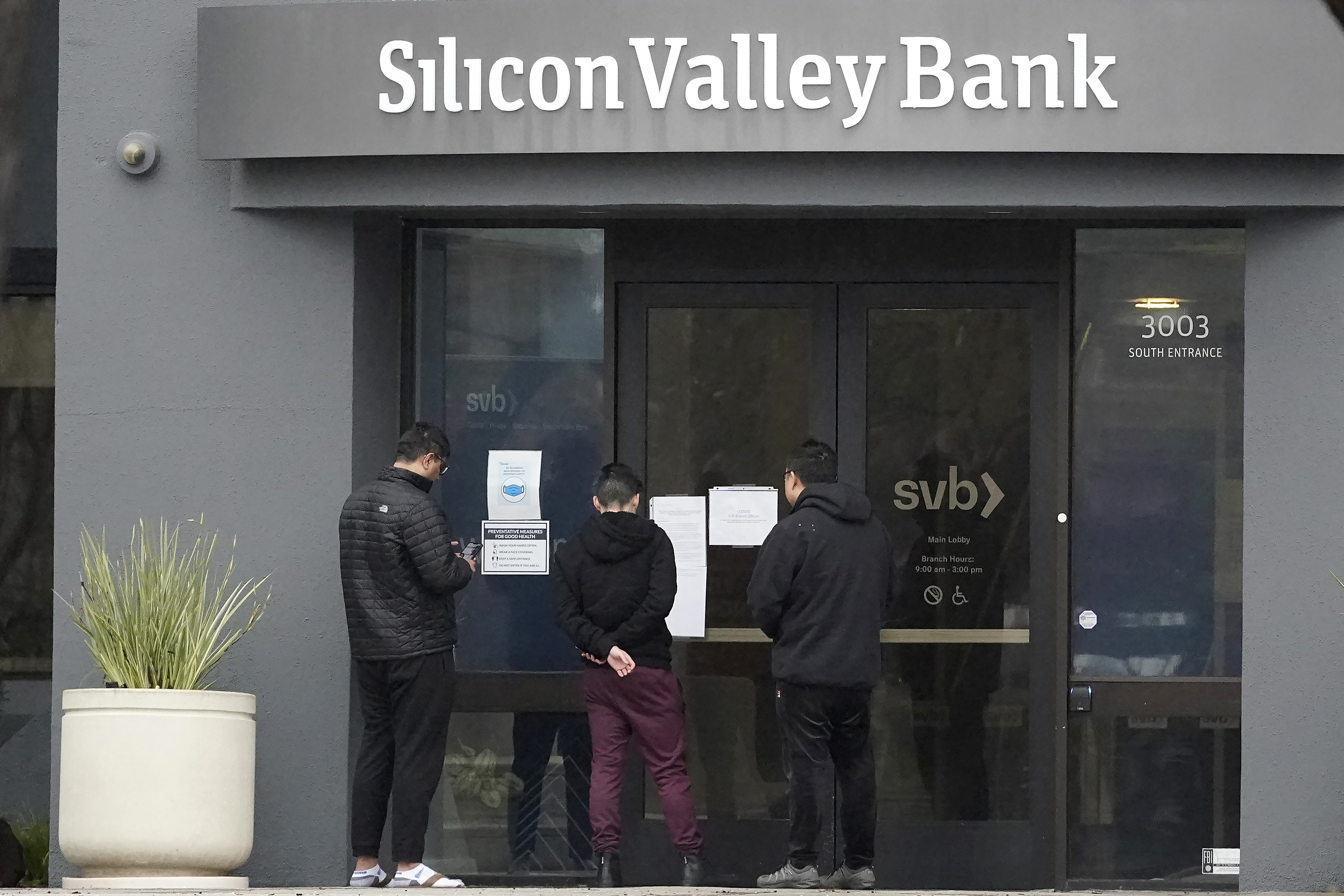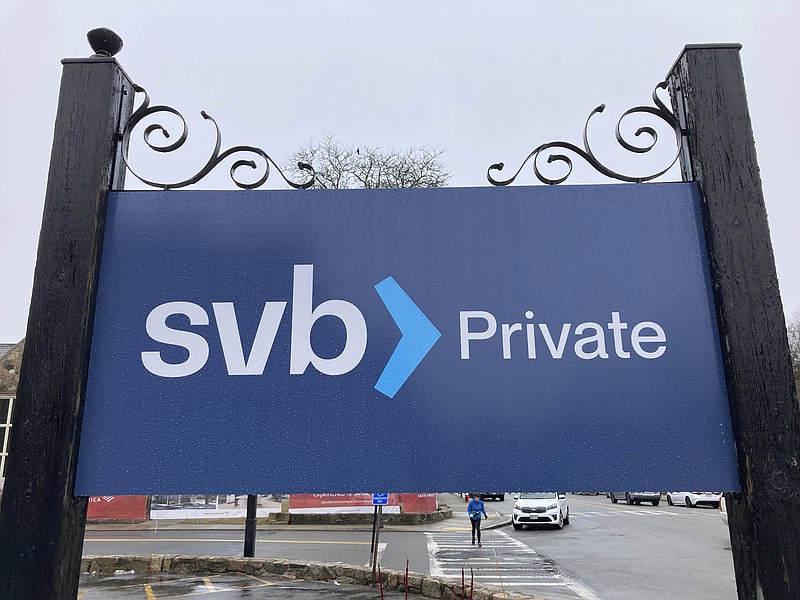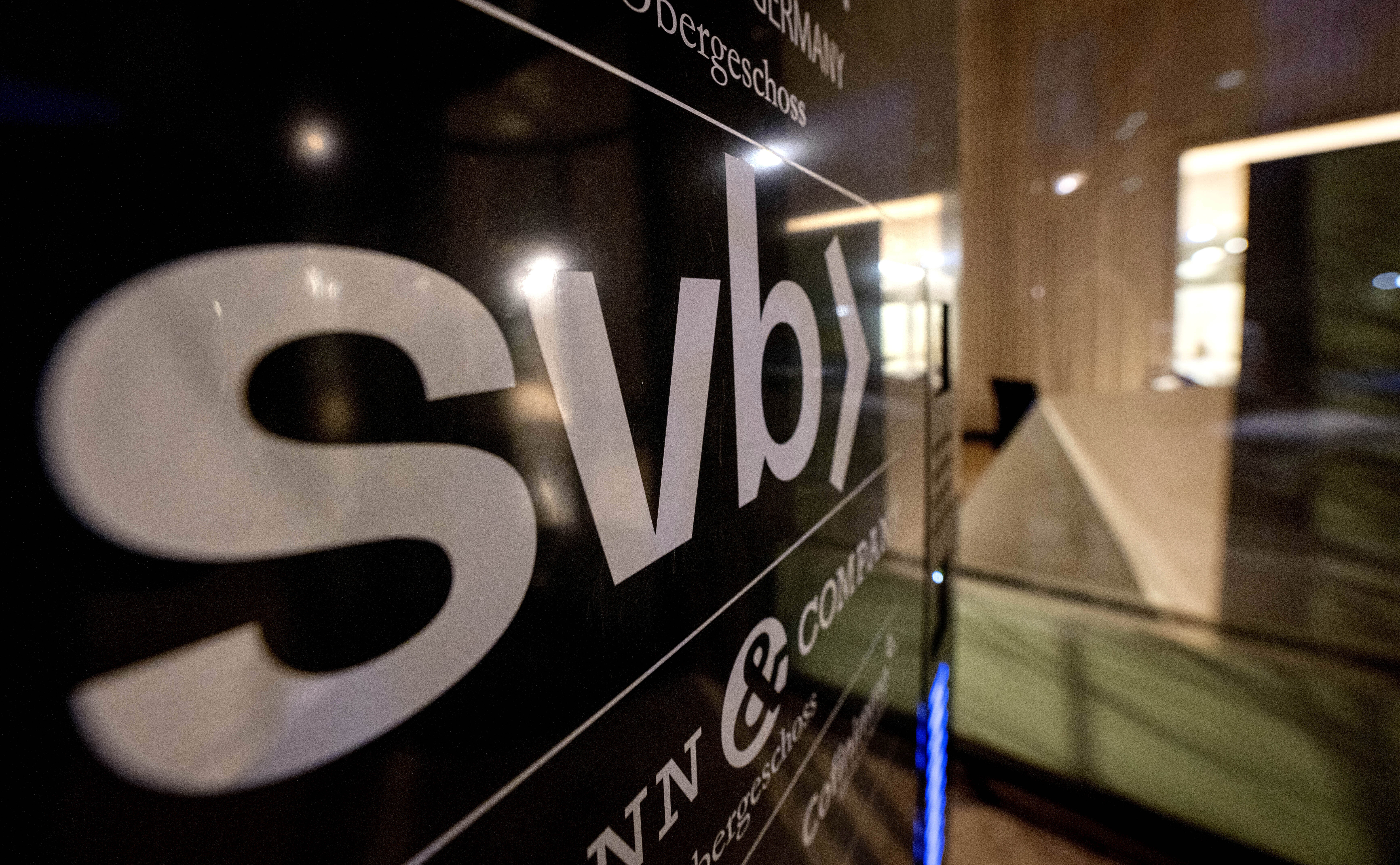NEW YORK -- The U.S. government took steps Sunday to stop a potential banking crisis after the failure of Silicon Valley Bank, assuring depositors at the failed financial institution that they would be able to access all of their money quickly.
The Federal Reserve is planning to ease the terms of banks' access to its discount window, giving firms a way to turn assets that have lost value into cash without the kind of losses that toppled SVB's Silicon Valley Bank. The Federal Reserve and Treasury Department are also preparing a program to backstop deposits using the Fed's emergency lending authority.
The near-financial crisis that U.S. regulators had to intervene to prevent left Asian markets jittery as trading began Monday. Regulators had worked all weekend to try and come up with a buyer for the bank, which was the second-largest bank failure in history. Those efforts appeared to have failed as of Sunday.
In a sign of how quickly the financial bleeding was occurring, regulators announced that New York-based Signature Bank had failed and was being seized on Sunday. At more than $110 billion in assets, Signature Bank is the third-largest bank failure in U.S. history.
The decision by Treasury to backstop all of Silicon Valley Bank's deposits -- not just those up to $250,000 that are automatically insured under federal law -- will likely ignite a political firestorm over the decision to protect the assets of tech firms, venture capitalists and other high earners in California.
"Today we are taking decisive actions to protect the U.S. economy by strengthening public confidence in our banking system," a joint statement from the Treasury Department, the Fed and the Federal Deposit Insurance Corp. said. "This step will ensure that the U.S. banking system continues to perform its vital roles of protecting deposits and providing access to credit to households and businesses in a manner that promotes strong and sustainable economic growth."
On a call with reporters on Sunday evening, a senior Treasury official defended the administration's decision as necessary to protect the stability of the banking system and emphasized that the move was aimed at protecting companies and workers who could be harmed by the bank's collapse -- not the bank's shareholders or executives. The official spoke on the condition of anonymity to speak about internal deliberations, under the conditions of the call.
The Treasury official also said the decision to protect all deposits was made following a recommendation by the FDIC and the Federal Reserve, the nation's top banking regulators. President Joe Biden was also consulted on the announcement.
The new Fed program will enable banks to pledge U.S. Treasuries and other safe government securities as collateral in return for loans of up to one year from the central bank.
The initiative is aimed at resolving one of the problems that led to Silicon Valley Bank's failure: unrealized losses on government securities that the bank owned. As the Fed raised interest rates last year, the value of those securities fell.
Industrywide, banks at the end of last year reported $620 billion in such paper losses, according to the FDIC.
The use of the Fed's emergency lending authority is for "unusual and exigent" circumstances, and signals that U.S. regulators view the spillovers from Silicon Valley Bank's collapse as a sign of systemic risk in markets. The FDIC will need to declare a systemic risk exception in order to insure the uninsured depositors.
The emergency lending facility is a Depression-era statute in the Federal Reserve Act that allows the central bank to make loans directly. The Fed is required to establish that borrowers were unable to obtain liquidity elsewhere. Using the emergency authority requires a vote by the Fed's board and approval from the Treasury secretary.
Some banks began drawing on the discount window Friday, seeking to shore up liquidity after authorities seized Silicon Valley Bank, people familiar with the situation said, the latest sign of mounting stress among the nation's lenders. In doing so, banks were reaching beyond the so-called lender of second-to-last resort, the Federal Home Loan Bank System, which has seen a surge in borrowing over the past year.
Unclear is how many banks did so. At least one would have normally used the New York FHLB. In a statement, the New York FHLB said it had experienced "heightened demand from our members as they reacted to a volatile market" but was able to honor borrowing requests made on Friday.
Regulators had to rush to close Silicon Valley Bank, a financial institution with more than $200 billion in assets, on Friday when it experienced a traditional run on the bank where depositors rushed to withdraw their funds all at once. It is the second-largest bank failure in U.S. history, behind only the 2008 failure of Washington Mutual.
Some prominent Silicon Valley executives feared that if Washington didn't rescue the failed bank, customers would make runs on other financial institutions in the coming days. Stock prices plunged over the past few days at other banks that cater to technology companies, including First Republic Bank and PacWest Bank.
Among the bank's customers are a range of companies from California's wine industry, where many wineries rely on Silicon Valley Bank for loans, and technology startups devoted to combating climate change.
Sunrun, which sells and leases solar energy systems, had less than $80 million of cash deposits with Silicon Valley Bank as of Friday and expects to have more information on expected recovery in the coming week, the company said in a statement.
Stitchfix, the popular clothing retail website, disclosed in a recent quarterly report that it had a credit line of up to $100 million with Silicon Valley Bank and other lenders.
Silicon Valley Bank began its slide into insolvency when its customers, largely technology companies that needed cash as they struggled to get financing, started withdrawing their deposits. The bank had to sell bonds at a loss to cover the withdrawals, leading to the largest failure of a U.S. financial institution since the height of the financial crisis.
Yellen described rising interest rates, which have been increased by the Federal Reserve to combat inflation, as the core problem for Silicon Valley Bank. Many of its assets, such as bonds or mortgage-backed securities, lost market value as rates climbed.
Sheila Bair, who was chairwoman of the FDIC chair during the 2008 financial crisis, recalled that with almost all the bank failures during that time, "we sold a failed bank to a healthy bank. And usually, the healthy acquirer would also cover the uninsured because they wanted the franchise value of those large depositors so optimally, that's the best outcome."
But with Silicon Valley Bank, she told NBC's "Meet the Press," "this was a liquidity failure, it was a bank run, so they didn't have time to prepare to market the bank. So they're having to do that now, and playing catch-up."
Information for this article was contributed by Ken Sweet, Christopher Rugaber, Chris Megerian, Cathy Bussewitz and Hope Yen of The Associated Press, Lydia Beyoud, Saleha Mohsin, Gillian Tan, Hannah Levitt, Matthew Monks, Sridhar Natarajan and Max Reyes of Bloomberg News (TNS) and by Jeff Stein, David J. Lynch, Tony Romm, Tyler Pager and Leigh Ann Caldwell of The Washington Post.
 People look at signs posted outside of an entrance to Silicon Valley Bank in Santa Clara, Calif., Friday, March 10, 2023. From winemakers in California to startups across the Atlantic Ocean, companies are scrambling to figure out how to manage their finances after their bank, Silicon Valley Bank, suddenly shut down on Friday. The meltdown means distress not only for businesses but also for all their workers whose paychecks may get tied up in the chaos. (AP Photo/Jeff Chiu)
People look at signs posted outside of an entrance to Silicon Valley Bank in Santa Clara, Calif., Friday, March 10, 2023. From winemakers in California to startups across the Atlantic Ocean, companies are scrambling to figure out how to manage their finances after their bank, Silicon Valley Bank, suddenly shut down on Friday. The meltdown means distress not only for businesses but also for all their workers whose paychecks may get tied up in the chaos. (AP Photo/Jeff Chiu)
